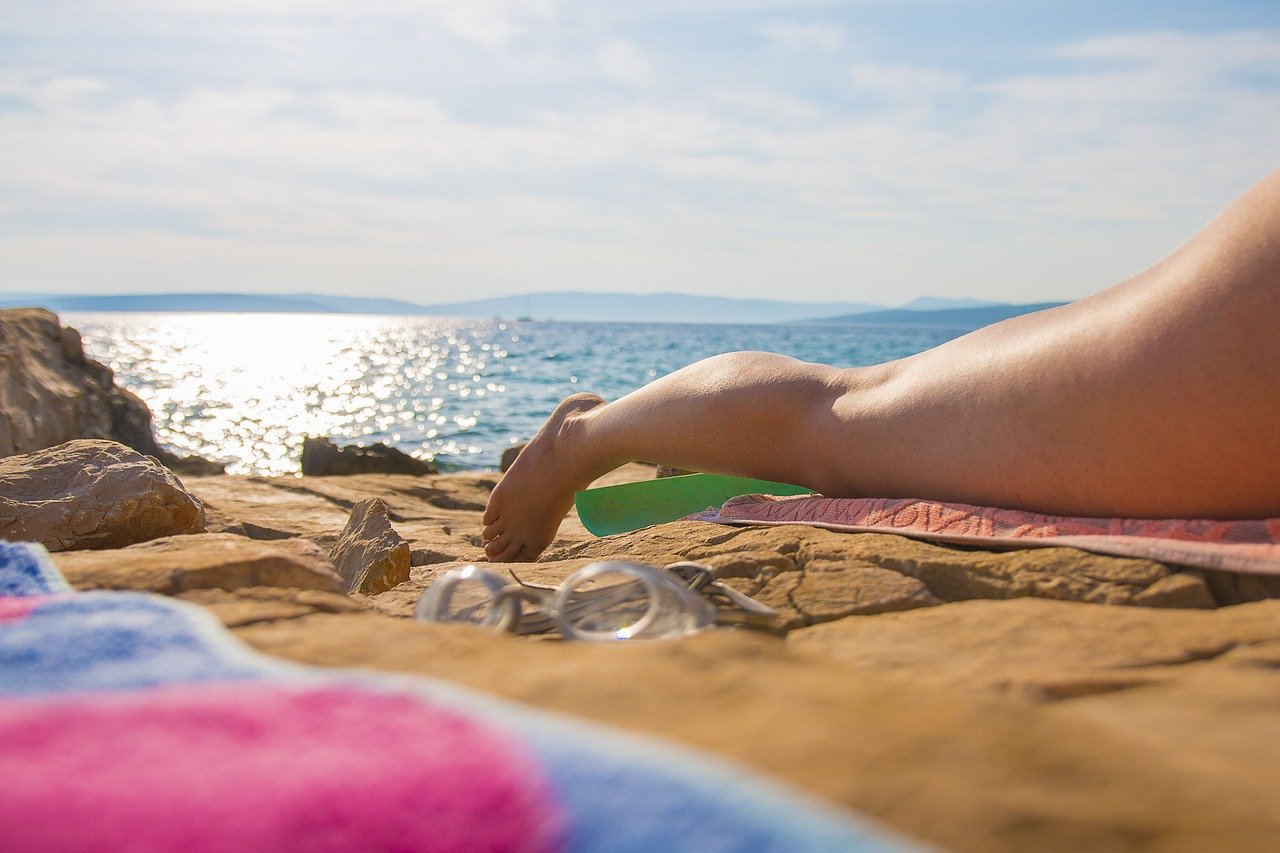
Many people love the look of tanned skin, which seems to be healthy and glowing. Unfortunately, appearances can be deceptive. Learn the facts about tanning and invest in some quality sun protection to look and feel your best over the long term.
1. UVB and UVA Rays
Ultraviolet (UV) radiation is a form of radiation emitted by the sun and artificial light sources like tanning beds. There are two main types of UV rays that penetrate the Earth’s atmosphere, UVA and UVB, which both damage the skin. This damage results in visible effects like wrinkles, discoloration, and other signs of premature aging, as well as an increased risk of skin cancers.
2. A Tan Is Damaged Skin, Not Healthy Skin
Although it looks harmless, a tan is your body’s way of indicating that it has begun to suffer damage from those harmful UV rays before your skin starts to burn and turn red.
3. UV Rays Can Change the DNA in Your Cells
Research indicates that UV exposure actually harms the skin cells’ DNA. To attempt to preserve the integrity of the genetic material stored in a cell exposed to UV rays, the body activates repair enzymes. If the enzymes cannot repair the damage caused by the rays, they trigger a mechanism for the cells to self-destruct (apoptosis). This process of DNA repair and cellular self-destruction appears, on the surface, as discoloration or “melanogenesis”—what we think of as a tan.
4. Every Time You Tan, You Increase Your Risk of Melanoma
Melanoma is the second most common cancer in women between 20 and 29 years old. Overall, skin cancer is the most common type of cancer, and the number of cases continues to increase. More than 3.5 million skin cancers are diagnosed each year in the United States. Numerous studies have shown that tanning (whether through natural sun exposure or indoor tanning beds) increases your risk of melanoma.
5. A Base Tan Does Little to Protect from Future UV Exposure
A base tan does not protect skin from damage. In fact, people who have a base tan are more likely to report getting sunburned. Studies have found that tanned skin offered sun protection factors (SPFs) of only between 2 and 3 (the CDC recommends an SPF of 15 or higher for proper protection).
6. Dark Skin Isn’t Immune to Sun Damage
Although darker-skinned individuals have lower overall risks of skin cancer than lighter-skinned people, extra melanin doesn’t completely protect then from skin cancer. In fact, because darker skin can obscure the initial signs of sun damage, it can be hard to tell that exposure has become dangerous until it’s too late. African Americans have higher rates of mortality from melanoma, one of the most dangerous forms of skin cancer, with a survival rate of only 74.1% five years after diagnosis (compared to 92% for Caucasians).
7. Tanning Beds Aren’t Safer Than the Sun
Many people believe that tanning beds are safer than outdoor sun exposure because you can control the amount of UV exposure you receive. This is not the case. The CDC reports that tanning beds cause hundreds of thousands of cases of skin cancer each year. One recent study analyzed data from more than 9,300 patients suffering from non-melanoma skin cancer and found that indoor tanning was linked to a 67 percent higher risk of developing squamous cell carcinoma and a 29 percent higher risk of developing basal cell carcinoma.
In addition to these inherent dangers of UV exposure, tanning beds injure thousands of people each year badly enough to go to a hospital. These injuries include burns, fainting, and eye injuries.
8. Tanning Can Lead to Cataracts and Eye Cancers
Speaking of eye injuries, UV damage to the eyes may result in the development of cataracts and eye cancers; the risk increases cumulatively with years of exposure. To protect yourself, ophthalmologists recommend that you wear 99 percent and higher UV–absorbent sunglasses, a hat with a brim, and appropriate SPF sunblock on your face.
9. Tanning Can Become Addictive
In addition to conforming with the popular perception that you look better and healthier with a tan, the tanning process itself can lead to mood enhancement and relaxation. UV light has been shown to increase the body’s release of opioid-like endorphins (chemicals that relieve pain and generate feelings of well-being). Like other substances or activities that lead to the release of these endorphins, tanning can potentially cause dependency.
10. Young People Are at Greater Risk of Harm
Youthful skin is most vulnerable to harm from UV rays, and damage can cause significant issues as you age. Patients who were exposed to indoor tanning before age 25 have been observed to have higher instances of slow-growing basal cell carcinoma, which is the most common type of non-melanoma skin cancer in the U.S. in people over 40 years old. Youthful skin that is subjected to high levels of UV exposure can also start to look and feel older faster, developing wrinkles and other signs of premature aging.
If your skin is showing wrinkles, discolorations, age spots, hyperpigmentation, or other symptoms of UV damage, make an appointment at the skin wellness center at Urban Effects MedSpa. One of the leading medical skin care spas in the Des Moines, Iowa area, we offer comprehensive cosmetic and spa services to help you turn back the clock and feel your best. Contact us today to learn more about our wellness services.
